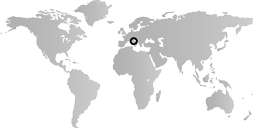By the turn of the seventeenth century, the concentration of artistic innovation once held by Florence shifts to Rome, where the dynamic Baroque style emerges and gains widespread influence. Before exponents of the Baroque reach Central Italy, artists of Tuscany, Umbria, and the Marches respond to—and in many cases reject—the sixteenth-century Mannerist style, returning instead to the classical ideals of earlier Renaissance masters. Meanwhile, the ruling Medici family draws to its Florentine court, still renowned for its magnificence, influential artists from Northern Italy, Rome, and Northern Europe, who promote the spread of Baroque, Rococo, and, later, Neoclassical styles in Central Italy. By the eighteenth century, however, the Medici slip from power, and at the extinction of their line in 1737, rule of the region passes to the House of Habsburg-Lorraine.


